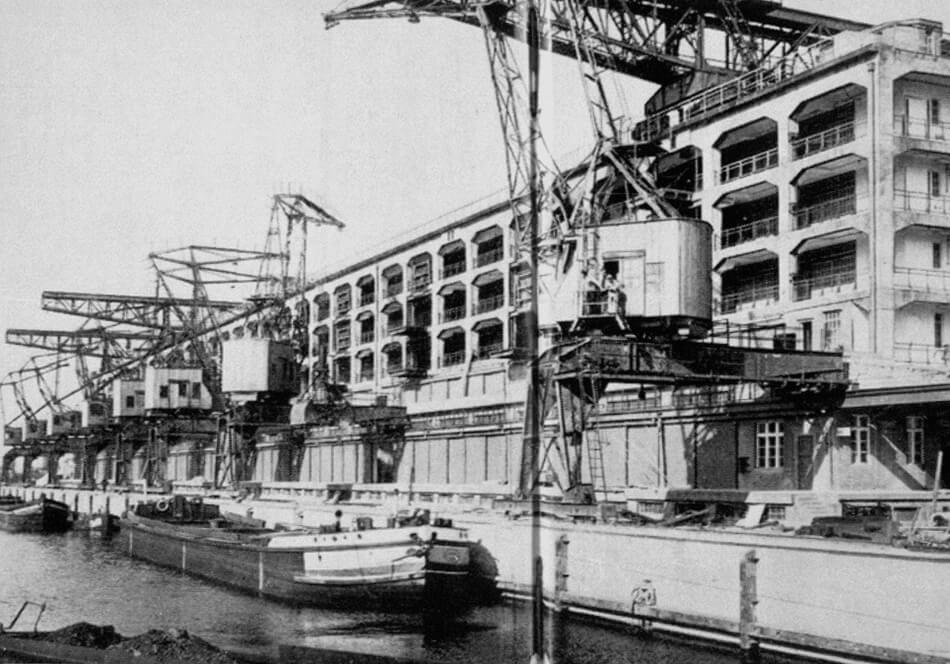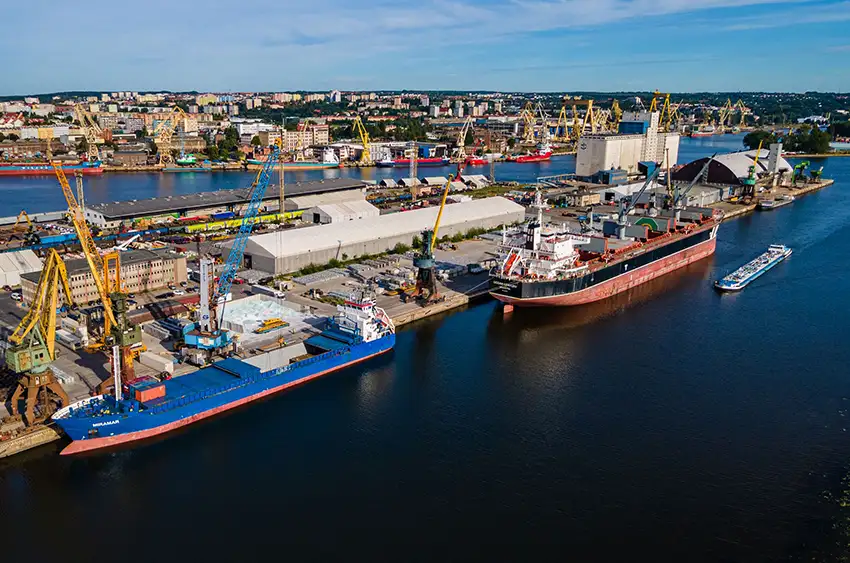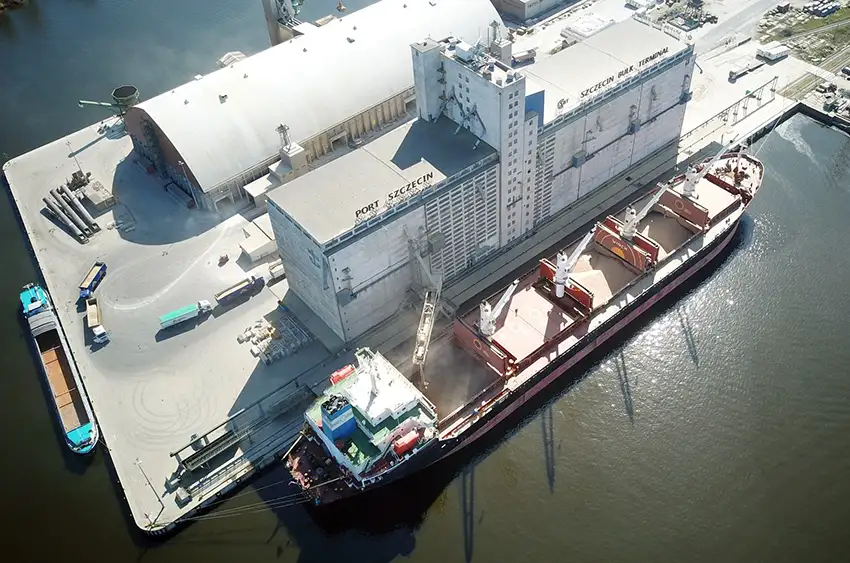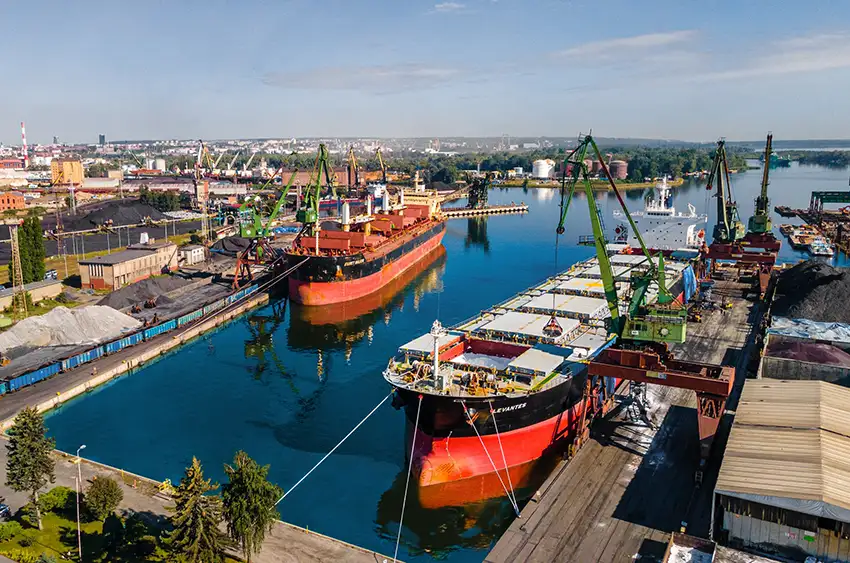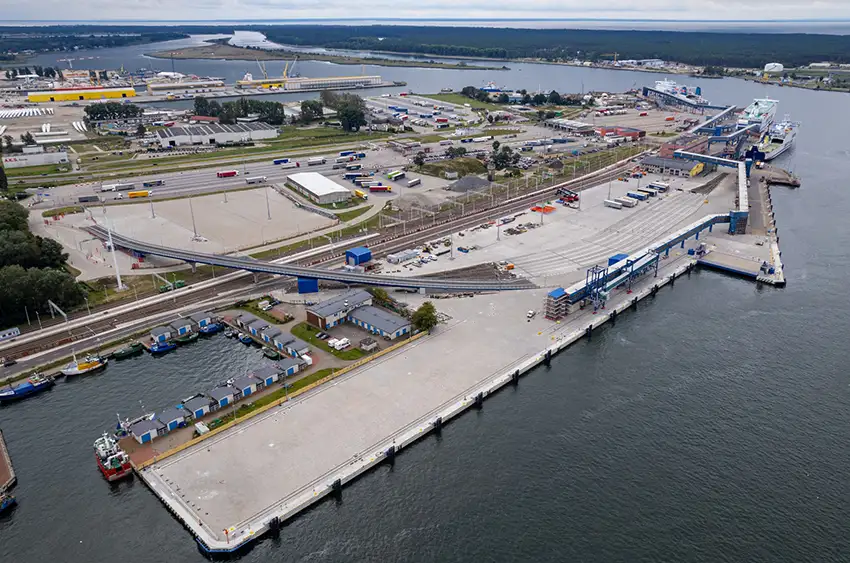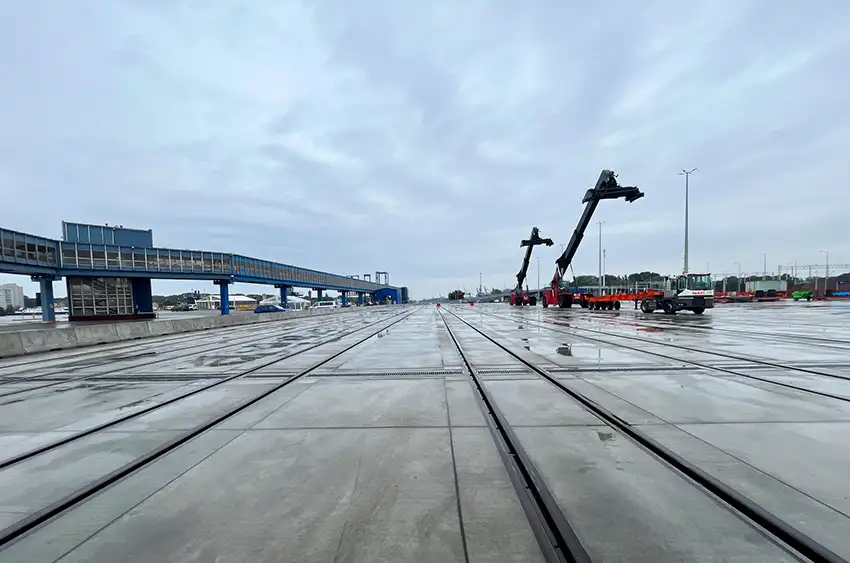Universal Port Complex
What we can achieve
Port of Szczecin
General Cargo Zone
The General Cargo Zone of Szczecin is designed for feeder and short sea connections that link the port complex with European ports. Simultaneously, Szczecin offers services for global container lines. Primarily, it handles and stores containers, steel products, non-ferrous metals, paper and wood pulp, project and oversized cargo, granite blocks, and some other goods. There is also a duty-free zone where mainly granite blocks or cocoa beans are handled.
Grain Terminals
The Port of Szczecin has a total of 6 grain terminals with a combined capacity of 145,000 tons. Among these is one of the largest silos on the Polish coast, with a storage capacity of 50,000 tons, and a flat storage silo with a capacity of 45,000 tons. The terminals for handling grain are designed for Panamax-sized ships.
Bulk Cargo Center
For handling bulk cargo, Szczecin has a multifunctional quay length of 3 km. Mainly, goods such as coal, coke, fertilizers, iron ore, pig iron, various liquid products, and some others are handled here. Szczecin has 500,000 square meters of open storage space, 60,000 square meters of warehouse space, and 18,000 square meters of storage space for liquid goods in the port area. The annual throughput is approximately 4.5 million tons. Handling of ships, barges, railcars, or trucks is possible.
Port of Świnoujście
LNG Terminal
The LNG terminal in Świnoujście aims to diversify the gas supply. The terminal was completed at the end of 2015 and has since handled over 21.5 million tons of LNG. Currently, the terminal serves the import of LNG and will soon be able to export LNG and bunker locally. In 2024, the terminal’s capacities will be further expanded.
Bulk Cargo Center
Świnoujście is the largest Polish port for handling iron ore. The port’s annual handling capacity is 12 million tons. Overall, the port has a total storage area of 250,000 square meters. The main bulk goods handled in Świnoujście are ore, coal, coke, fertilizers, grain and feed, biomass, biofuels, forest products, and liquid goods.
Intermodal Ferry Terminal
The ferry terminal in Świnoujście is the largest in Poland and one of the most modern in the Baltic Sea region. There are 13 daily sailings to and from Ystad and Trelleborg in Sweden. With a 6 to 8-hour journey, it is the shortest route from Southern Europe to Scandinavia. Annually, the ferry terminal handles 15 million tons. Within 10 years, 5 million trucks and trailers will be processed here. The terminal is capable of accommodating the largest ferries on the Baltic Sea, with lengths of up to 270 meters. In 2024, the ferry terminal will be used for handling intermodal transport.
General Cargo Terminal
In Świnoujście, a wide range of cargo can be handled, which is later transported by rail, truck, or inland waterway. Mainly, containers, steel products, pallets, big bags, or project and oversized cargo are handled here. The general cargo terminal in Świnoujście has a total area of 53 hectares. Of this, 300,000 square meters are open storage, 27,000 square meters are warehouse space, and 14,000 square meters are refrigerated storage space. Additionally, the terminal has a duty-free zone.
Świnoujście
Offshore Wind Turbine Installation Terminal
In the first phase, the Offshore Wind Turbine Installation Terminal in Świnoujście will be developed with a quay length of 485 meters, a technical depth at the quay and access channel of 12.5 meters, and an access channel width of 140 meters. The terminal will be designed to support a load capacity of 5 tons / square meters in the quay area and 50 tons / square meters in the assembly and loading area for towers. The annual handling capacity of the terminal will be 80 offshore wind turbines per year. The terminal will be operational in 2025.
In the next step, an additional quay for the initial assembly of wind turbine towers will be built at the Port of Świnoujście. This construction is a priority for the port and is included in the investment plan. Development areas of about 26 hectares are available for this purpose, which, together with the currently under-construction installation terminal in the first phase, will create a total of about 46 hectares of a completely new quality of port services. The second quay will be completed in 2026/2027.

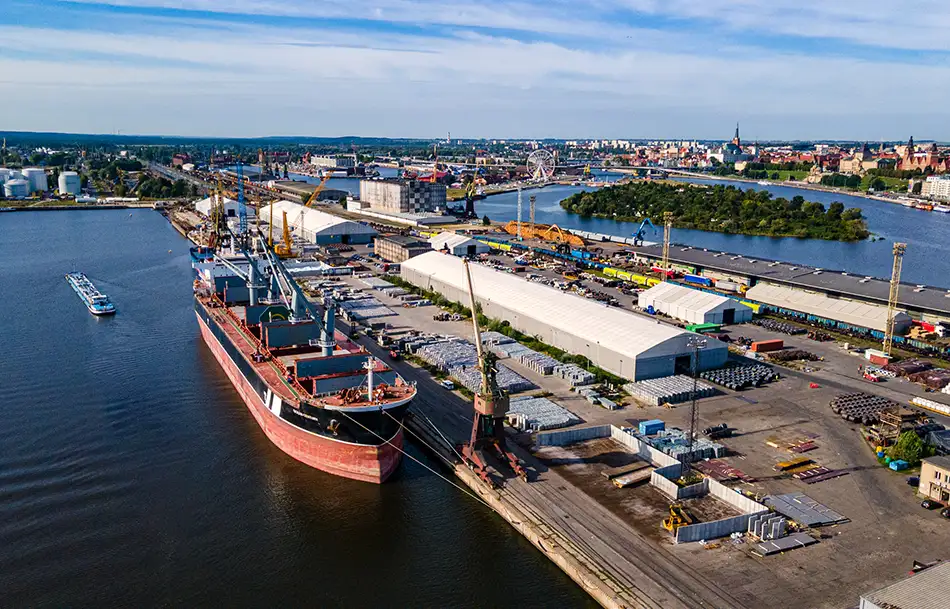
About us
Port Szczecin-Świnoujście
The seaports of Szczecin and Świnoujście are operated by a single port authority and play a crucial role in Poland’s economy. The ports also have a strategically advantageous location, bordering Germany, with direct access to the Baltic Sea, one of the shortest routes to Scandinavian countries, and good inland connections via the Oder River.
In total, the two ports have a combined quay length of 15.4 km, with a maximum water depth of 14.5 meters in Świnoujście and 10.5 / 12.5 meters in Szczecin. The water port area of both ports covers a total of 21,586,322 square meters, and the land port area covers 18,364,065 square meters. Together, the ports of Szczecin and Świnoujście have a handling potential of 52.5 million tons per year.
Szczecin and Świnoujście
The History of the Ports
The two ports have a very long and turbulent history. In 1950, the ports came under Polish control, and the state-owned company Port Authority Szczecin was established along with the Port Office in Świnoujście. The Port Authority of Szczecin existed until 1977. Afterward, the Szczecin-Świnoujście port complex was founded, which in 1983 was transformed into the Szczecin-Świnoujście Port Authority, operating under this name until the early 1990s.
Due to their ideal location in the heart of Europe, where the sea meets the river, the ports of Szczecin and Świnoujście have become an integral part of the cityscape and the economic zone of the city and the region. After the political upheavals of 1989, the ports of Szczecin and Świnoujście began to operate in a free market economy. In 2001, the port authority acquired a ferry base in Świnoujście. This acquisition triggered an investment boom, particularly reinforced by Poland’s accession to the EU.
The port has developed into a multi-sector infrastructure and logistics hub. For this reason, current investments focus on improving the competitiveness of the port complex, enhancing the efficiency of the managed infrastructure, and developing additional areas for port purposes.
